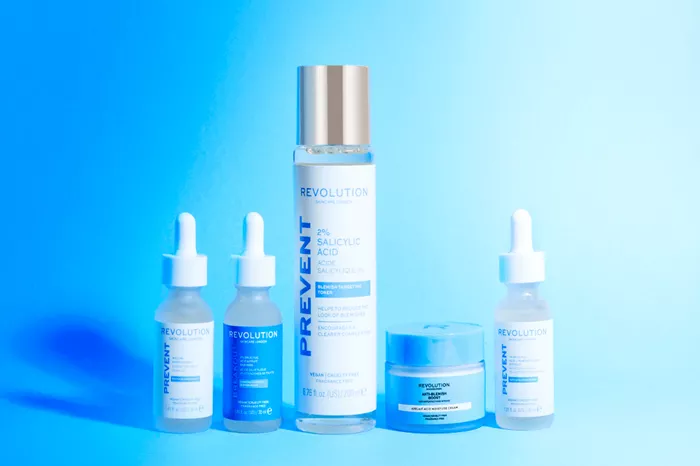Salicylic acid is a well-known ingredient in the skincare industry, particularly celebrated for its effectiveness in treating acne and improving overall skin texture. As a beta-hydroxy acid (BHA), salicylic acid penetrates deep into the pores, making it a powerful ally against various skin concerns. This article will delve into the multifaceted benefits of salicylic acid, its mechanisms of action, and how to incorporate it into your skincare routine effectively.
What Is Salicylic Acid?
Salicylic acid is a naturally occurring compound derived from willow bark and is known for its keratolytic properties. This means it can break down the outer layer of skin, promoting exfoliation and the shedding of dead skin cells. Unlike alpha-hydroxy acids (AHAs), which are water-soluble, salicylic acid is oil-soluble. This unique property allows it to penetrate deeper into the skin, effectively unclogging pores and dissolving the “glue” that holds dead skin cells together24.
The Mechanism of Action
How Salicylic Acid Works
Salicylic acid operates through several key mechanisms:
Exfoliation: It promotes the shedding of dead skin cells, helping to prevent clogged pores.
Sebum Regulation: Salicylic acid reduces sebum production, which is crucial for controlling oily skin and preventing acne.
Anti-inflammatory Properties: It calms inflamed skin, reducing redness and irritation associated with acne34.
Unclogging Pores: By penetrating deep into the pores, it dissolves debris and excess oil that can lead to breakouts56.
Benefits of Salicylic Acid
Salicylic acid offers a wide range of benefits for various skin types:
Acne Treatment: Highly effective for treating mild to moderate acne, including blackheads and whiteheads.
Exfoliation: Helps remove dead skin cells, promoting a smoother complexion.
Reduces Oiliness: Controls excess oil production, making it ideal for oily and combination skin types.
Minimizes Pores: Regular use can lead to smaller-looking pores due to reduced clogging.
Improves Skin Texture: Enhances overall skin tone and texture by promoting cellular turnover17.
Who Should Use Salicylic Acid?
Ideal Candidates
Salicylic acid is particularly beneficial for individuals with:
Oily Skin: Its oil-reducing properties make it an excellent choice for those with oily complexions.
Acne-Prone Skin: Effective in treating various forms of acne, including cystic acne when used appropriately.
Combination Skin: Can help balance oil production while addressing dryness in other areas.
Caution for Sensitive Skin
While salicylic acid is suitable for many skin types, those with sensitive or dry skin should approach it with caution. It’s advisable to start with lower concentrations (around 0.5% to 1%) and gradually increase usage as tolerated68.
How to Incorporate Salicylic Acid into Your Skincare Routine
Choosing the Right Products
Salicylic acid is available in various formulations, including:
Cleansers: Ideal for daily use to help prevent breakouts.
Toners: Can provide a refreshing way to apply salicylic acid while balancing the skin’s pH.
Serums: Concentrated formulas that target specific areas of concern.
Spot Treatments: Effective for targeting individual blemishes.
Application Tips
Patch Test: Always conduct a patch test before full application to check for any adverse reactions.
Start Slow: Begin with products containing lower concentrations and gradually increase usage frequency as your skin adjusts.
Moisturize: Follow up with a good moisturizer to prevent dryness and irritation.
Sunscreen: Since salicylic acid can increase sun sensitivity, applying sunscreen daily is essential35.
Potential Side Effects
Common Reactions
While generally safe, salicylic acid may cause some side effects, especially when first introduced:
- Mild stinging or tingling sensation
- Dryness or peeling
- Redness or irritation
These reactions often subside as your skin acclimates to the ingredient49.
Severe Reactions
In rare cases, individuals may experience more severe reactions such as:
- Severe itching or rash
- Swelling
- Signs of an allergic reaction (difficulty breathing, hives)
If any severe symptoms occur, discontinue use immediately and consult a healthcare professional39.
Conclusion
Salicylic acid stands out as a versatile ingredient in skincare, particularly for those battling acne and oily skin. Its ability to exfoliate, reduce inflammation, and regulate sebum production makes it an essential component in many skincare routines. By understanding how to use salicylic acid effectively and being aware of potential side effects, individuals can harness its benefits for clearer, healthier skin.
In summary, salicylic acid is not just an acne treatment; it is a comprehensive skincare solution that addresses multiple concerns while promoting overall skin health. Whether you are new to skincare or looking to enhance your routine, incorporating salicylic acid may be the key to achieving your desired complexion.
Related topic:
Why Is My Skin Peeling After Skincare?
When Do I Exfoliate In My Skincare Routine?
When In Skincare Routine To Use Mask?

